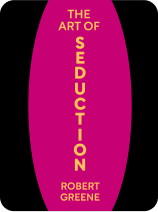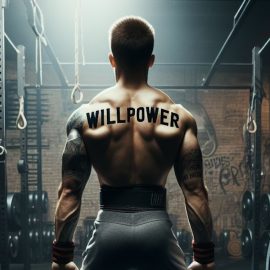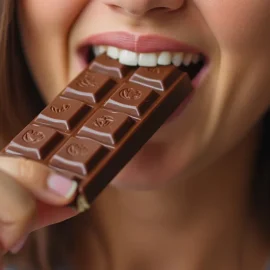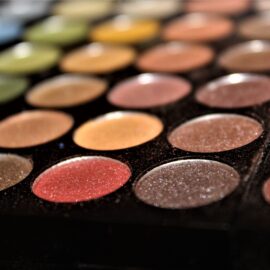

This article is an excerpt from the Shortform book guide to "The Art of Seduction" by Robert Greene. Shortform has the world's best summaries and analyses of books you should be reading.
Like this article? Sign up for a free trial here.
What are Robert Greene’s nine types of seducers in The Art of Seduction? Which types are more common among men, and which ones among women?
In his book The Art of Seduction, Robert Greene describes nine types of seducers, each with a distinct seduction style. Greene says Types 1 and 2 are specifically female and male types, respectively. The other types can all apply to any gender.
Below, we’ll define Greene’s nine seducer types, using his labels for them, and we’ll describe each one’s seductive quality.
The Types of Seducers
According to Robert Greene, the first step to becoming an irresistible seducer is to identify and develop a seduction style that’s compatible with your personality. Below are the descriptions of Greene’s 9 types of seducers from The Art of Seduction. As you read these descriptions, consider which ones might be compatible with your natural tendencies.
Type 1—“The Siren”—represents the (heterosexual) male fantasy. She’s a hypersexual, stereotypically feminine woman. She invites repressed, bored, and rational men to let loose and fully give themselves to pleasure. We might also think of this seductress as the “femme fatale” stereotype.
(Shortform note: In ancient Greek mythology, a Siren is a mythical half-bird, half-human woman with an irresistibly beautiful song. The Siren resides on rocky coasts and lures sailors in with her seductive voice, eventually causing them to crash on the rocks. This mythology warns of the dangerous nature of the seductive woman.)
Type 2—“The Rake”—is the quintessential “bad boy.” This type showers women with flattery and gives them ample excitement and sexual pleasure. Greene says this type is well known for sleeping with many women, a reputation that he creates himself by bragging about his conquests. He knows that doing this will draw in more targets, as women seek to find out if he lives up to his reputation.
Type 3—“The Dandy”—is a seducer who experiments with gender nonconformity. For instance, a man may incorporate elements of femininity into his appearance or behavior, while a woman may embrace some masculine traits. Greene emphasizes, however, that this type doesn’t go too far with expressing traits of the opposite gender. This would lead heterosexual people of the opposite sex—in other words, their intended targets—to no longer find them attractive.
| How Attractive Do We Really Find “Badness” and Androgyny? Despite the well-known axiom that “nice guys finish last,” psychological studies have shown that in dating scenarios, women consistently choose men who are kind and sensitive over those presented as the typical “bad boy.” Psychologists say one of the reasons we may believe women tend to go for “bad” guys is because narcissists can appear to be the kind and sensitive men they’re looking for, and only later do the negative qualities emerge. So, in the short term, many people—men and women—do fall for partners who are selfish and cruel. But they don’t choose them for that reason. On the other hand, research has indeed shown that men and women both rate opposite-sex androgynous people as more attractive than traditionally masculine and feminine people. One study also showed that androgynous people are perceived as better adjusted and more likable. |
Type 4—“The Natural”—is a person who has retained childlike qualities in adulthood. For example, they’re playful and spontaneous. They may also seem innocent for their years (for instance, unaware of the unpleasant parts of life). Greene explains that many people secretly wish they could return to the carefree and joyful time of childhood to escape the boring rigidity of adult life. This seducer’s childlike demeanor provides this appeal.
(Shortform note: This type is reminiscent of the “manic pixie dream girl” that appears as a trope in countless movies. This character is always a very young woman with a bubbly, free-spirited nature who serves the purpose of reinvigorating a man’s life with childlike wonder and playfulness.)
Type 5—“The Charmer”—hooks their targets by appealing to their vanity and showering them with flattery. They boost the target’s self-esteem by paying them compliments designed to soothe their insecurities. Type 5 seducers never criticize or disagree with their target. They always agree, flatter, and boost the target. This particular seduction strategy is a long con and is not overtly sexual.
Type 6—“The Ideal Lover”—lures in their targets by figuring out what the target longs for most in life, then modifying their own personality to fulfill that desire. For instance, if a target desires romance, this type passionately woos them—even if such behavior doesn’t come naturally to them. Greene says many people who have unfulfilled desires feel like failures who’ve fallen short of their full potential. The Type 6 seducer eliminates this feeling of failure by helping the target finally achieve their wish.
(Shortform note: Types 5 and 6 could align with the idea of learning your partner’s love language, since both of these involve knowing how to cater your affections to your specific target. In The 5 Love Languages, Gary Chapman explains that being a better partner means learning how that person wants to receive love, and adapting to it. For example, if your partner’s love language is “receiving gifts,” you should make it a priority to surprise them with little presents, even if gift-giving isn’t meaningful to you.)
Type 7—“The Coquette”—is a tease who plays hot and cold with their targets. One week, they may be attentive and affectionate, giving their target hope that the relationship will work. The next week, they’ll be distant, telling the target that they don’t really want to be with them and can live without them—or, ignoring the target entirely. The target often views Type 7’s cold moods as a challenge to be overcome (this works well with targets who relish a challenge), rather than a sign that the relationship isn’t working.
Type 8—“The Charismatic”—radiates a charisma that makes them seem extraordinary. The root of their charisma could be any number of things, such as confidence, happiness, or raw sexual energy. Whatever the case, it’s a quality that naturally enthralls most people, making it easy for this type to seduce almost anyone. Greene explains that targets devote themselves to this seducer because they believe that these people are “special” and hope their extraordinary nature will rub off.
Type 9—“The Star”—intrigues their targets by being simultaneously “real” and “unreal.” This means that they have ordinary and “relatable” personality traits, while simultaneously being “special” in some way. Greene says embodying a mix of reality and unreality gives Type 9 an ethereal, dream-like air that fascinates their targets. For example, someone who’s a musician might set themselves apart by presenting a seductive “performer” side on stage, but while interacting with their target they play up their humble background.
| Make Yourself Extraordinary Seducer types 8 and 9 rely on standing out as extraordinary and setting yourself apart from ordinary people in some way. But how do you do that? Leadership expert Joseph Lalonde gives tips for making yourself stand out from the crowd so people will be captivated by you: Be a risk-taker. Because most people are afraid to take risks, they admire those who choose adventure over fear. Don’t let failure stop you. When you don’t succeed, get up and keep trying. Too many people fear failure or give up too quickly. Find a unique interest or hobby. Lalonde took up ice climbing, but you could choose any adventurous or exciting interest that will fascinate people when you tell them about it. Be of service to the world. Volunteering for a charitable organization will make you stand out as a person others see as extraordinary. If you don’t want to simply do it out of the goodness of your own heart, consider that research shows altruism makes people—especially women—perceive potential partners as more attractive. |

———End of Preview———
Like what you just read? Read the rest of the world's best book summary and analysis of Robert Greene's "The Art of Seduction" at Shortform.
Here's what you'll find in our full The Art of Seduction summary:
- The psychology of how to successfully entice lovers or devoted followers
- Greene's advice for choosing a seduction target based on their characteristics
- A step-by-step guide on how to seduce your chosen target







I have a question, what if a women holds more than one seductive quality, For example : what if a women finds herself locating the qualities of a siren, a charismatic and a star? Is that possible?
LOGICALLY , SEDUCTION TYPES SEEM TO BELIKE PERSONALITY TYPES WOULD YOU SAY YOU CAN FIT YOUR ENTIRE PERSONALITY INSIDE OF ONE BOX?